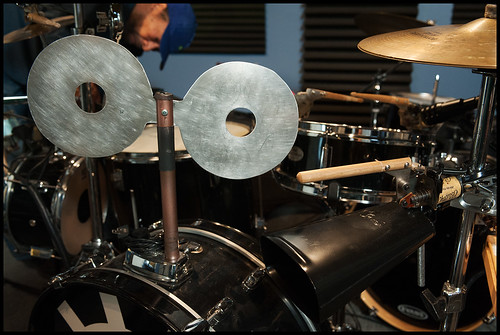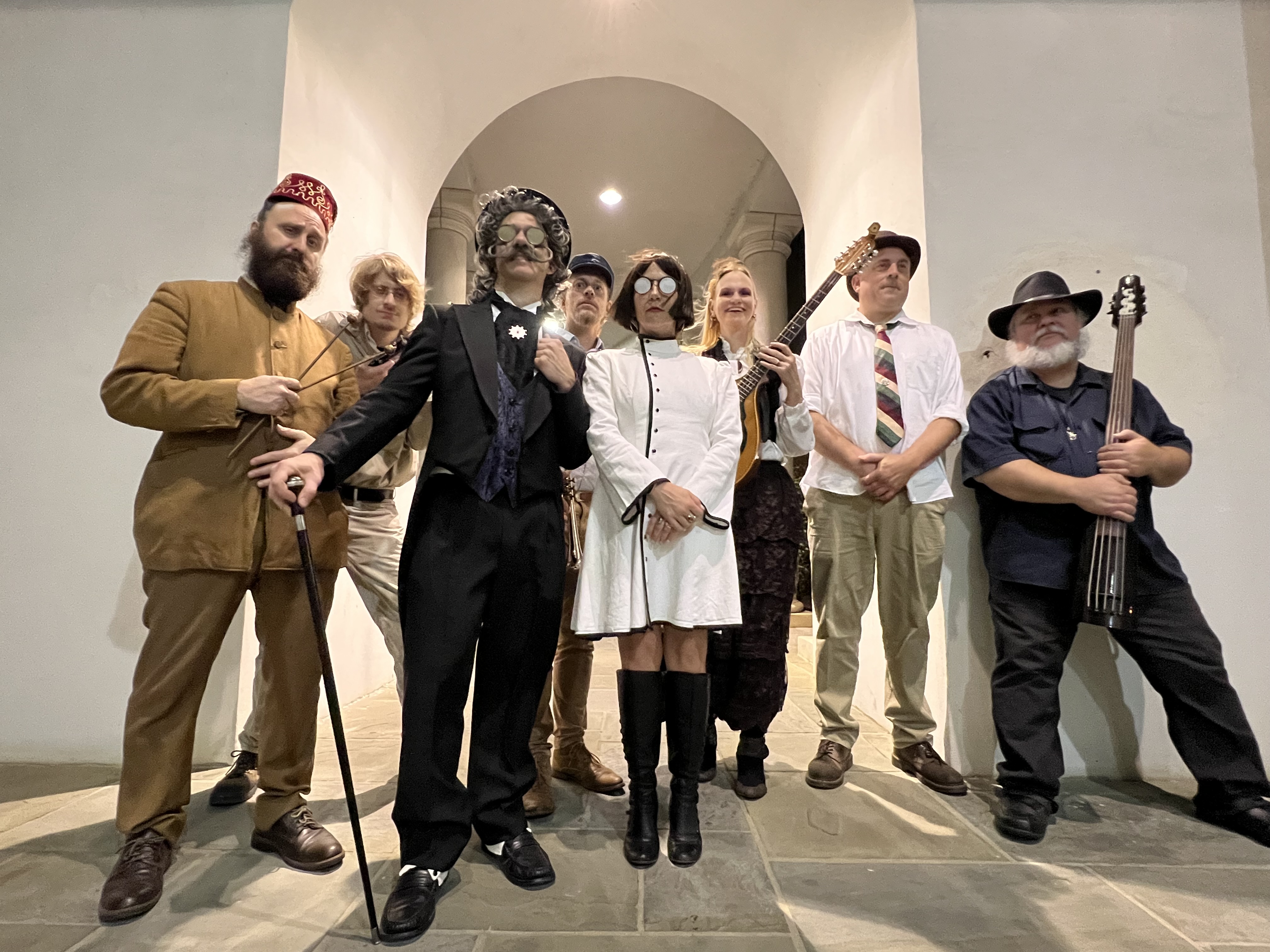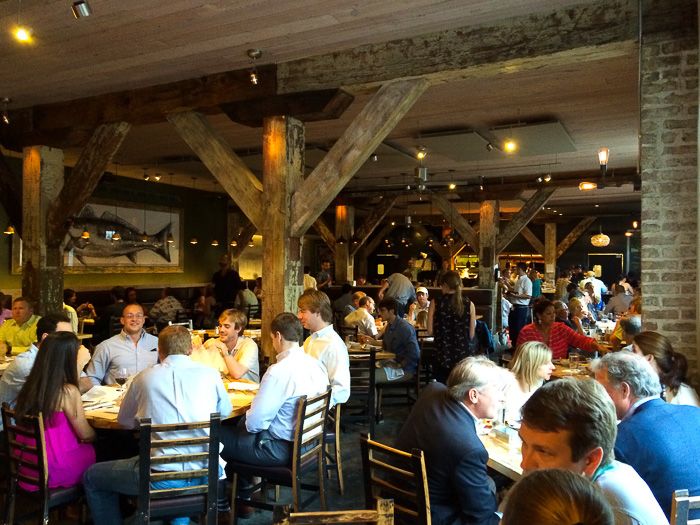We’ve already covered the
biographies of Benny Turner and the Mighty Pelicans, but now we’re proud to
announce the third band to play at the crawfish boil, the New Orleans Steamcog
Orchestra!
The New
Orleans Steamcog Orchestra plays Dixieland and Ragtime music. They feature male
and female singers and trumpets, trombones, clarinets, xylophone, upright bass,
piano, and banjo. They even have a mechanical drum machine. They dress in turn
of the 20th century costumes and each member of the band has a turn
of the century personality to match.
Prof. Milo R. Pinkerton--Millionaire, philanthropist and
inventor, Prof. Pinkerton commands audiences of every size with his fabulous
Gigaphone, an invention that enables him to project his voice to the largest of
halls, and COGSworthy, the fantastic clockwork drummer.
Formelda Hyde-Pinkerton--Granddaughter and protege of Prof.
Pinkerton, Formelda wields her amazing voice like a surgical instrument. Not a
woman to be trifled with, she leaves in her wake a smoldering trail of zombies,
lawsuits, human organs, and satisfied audiences.
Mahmoud Muhammad Akbar--From the stews of Egypt comes this
expert of the Glockenspiel. They say his eyes posess strange powers...
Professor Kikker von Froggsworthy--A professor of unknown
credentials, this Dutch trombone impersario isn't afraid to let off steam once
in a while.
Labonzo Dogmann--A former sheep-herder, this strange
Bohemian individual is blessed with a seemingly endless supply of string
material for his upright bass.
 |
| Meet COGSworthy, the mechanical drum machine. |
Impersario Konstantin--This Russian master of the ivories
journeyed to America to learn the secrets of Ragtime.
Sgt. Shellshock--The enforcer in Pinkerton's retinue, this
army veteran brings to bear force of arms AND banjo strings.
Patrick O'Doyle--This Irish coal miner stowed away on a
steamboat down the Ohio and Mississippi from Pennsylvania to escape the mines
and seek adventure... and he found it in the New Orleans Steamcog Orchestra!
Percival Archibald Quatermain--Our youngest member, brings
exceptional lockpicking and clarinet abilities to the table.
'Cogsworthy'--Though not actually a person, this Clockwork
Robotic Automated Percussionator keeps the beat going more reliably than any
human trap-kit player!
In 2015, the Steamcog orchestra released their first album Victory Through Steam. Enjoy a video of their music below. And we’re thrilled to add the New Orleans Steamcog Orchestra to the Crawfish Boil lineup.
In 2015, the Steamcog orchestra released their first album Victory Through Steam. Enjoy a video of their music below. And we’re thrilled to add the New Orleans Steamcog Orchestra to the Crawfish Boil lineup.









